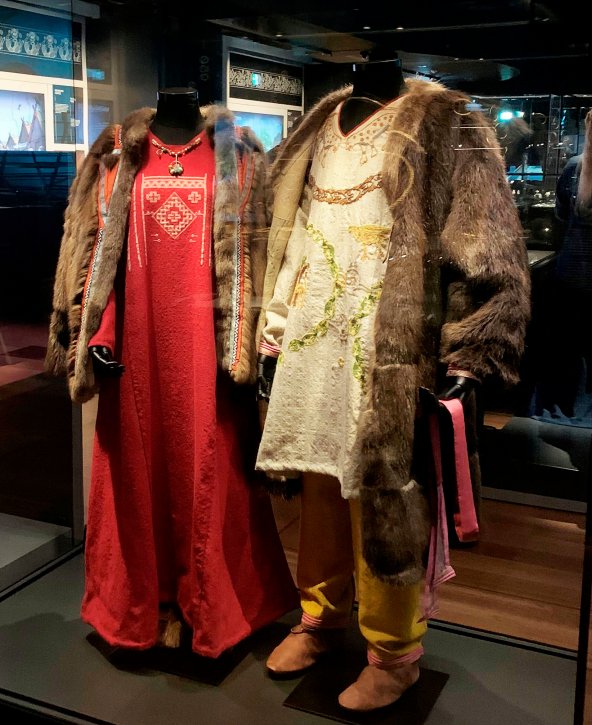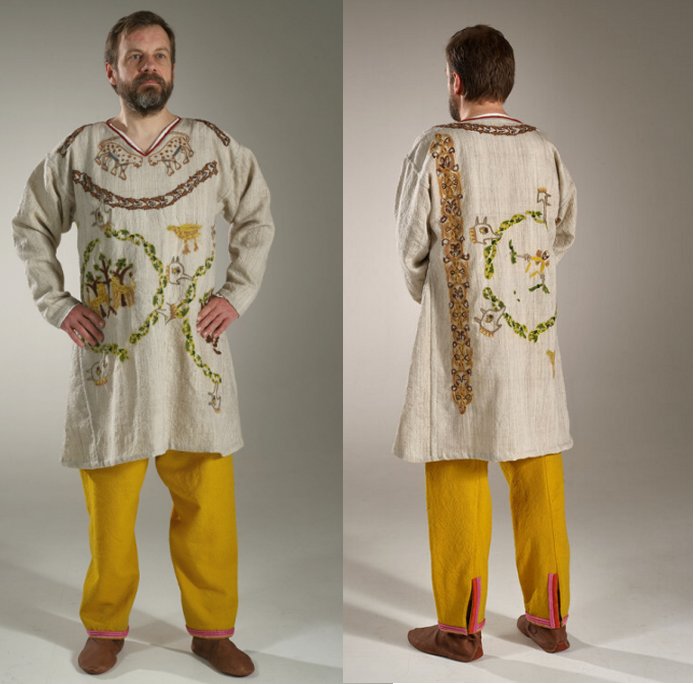Impressive Textile Reconstruction Shows What Viking Age People Dressed Like
Ellen Lloyd - AncientPages.com - Those of us interested in ancient history enjoy learning as much as possible about the daily life of our ancestors. What food did people in the past eat? What did their homes look like? How did they spend their free time? How did they dress? These are just some of the many questions we ponder.
Recently, many movies have raised peoples' interest in Vikings, Norse people, and Norse mythology.
The finished outfits in the Viking Age exhibition, The Raid, at the National Museum of Denmark. Credit: Charlotte Rimstad
Some historical movies can give us a surprisingly accurate image of the ancient past. Still, when we want to gain a solid knowledge of ancient history, most prefer to rely on archaeologists, historians, and other specialized experts rather than movie producers. This brings us to the subject of this article – How did Viking Age people dress?
How Did Scientists Reconstruct Viking Age Clothing?
The impressive Viking Age project led by the National Museum of Copenhagen gives us an outstanding view of the Viking Age society.
The museum has collaborated with the Centre for Textile Research (CTR) at University of Copenhagen and leading Scandinavian textile experts from several universities to recreate the fashion of the Viking Age.
Scientists have successfully produced clothes our ancestors wore by analyzing archaeological finds of textile tools, textiles, skins, and fibers from graves and settlements.
Textile samples were taken from Hedeby, and the male and female cloth reconstruction was based on the content in two famous Danish Viking Age inhumation graves. 1
Who Were Viking Age People?
It is important to remember that people living during the Viking Age never spoke of themselves as Vikings. To understand why ancient Scandinavians did not refer to themselves as Vikings, one must remember the meaning of the word Viking. In Old Norse, an old Scandinavian language, the word appears as "vikingr", which designates a person, while "viking" designates a practice.
According to Jan Bill, a professor of Viking archaeology and curator of Oslo's Viking Ship Museum, "the Scandinavians never spoke of themselves as Vikings, as an identity for anybody Scandinavian. The word meant an activity, to go raiding, or a person doing that."
Reconstructed woman's and man's costumes from Well-dressed in the Viking Age. Credit: Charlotte Rimstad
"In the Viking Age, much of the population lived and worked as farmers, fishermen and craftsmen in small scale communities that depended on self-sustainability. In these small groups, clothing, textiles and skin production were an integrated part of agriculture and an important outcome of food production. It is exactly these materials, related to the cloth culture, that were in focus in the project, Fashioning the Viking Age," the researchers write in their study. 2
As previously discussed on Ancient Pages, archaeologists have found evidence Viking Age people fancied strong colors.
It was commonly believed that people could show off using particular colors to symbolize their high place in society. Strong colors were popular because they were rare and represented status.
Archaeological discoveries have also revealed that Viking Age people were cleaner than most and were rather vain. Scientists have discovered tweezers, combs, razors, nail cleaners, ear cleaners, and toothpicks inside Viking tombs. All these Viking artifacts show that people of the Viking Age cared greatly about personal grooming.
Reconstructed Female And Male Viking Ages Clothing
The National Museum of Denmark presents two Viking Age textile reconstructions created using samples from burials in the country.
"The overall textile design of the two reconstructed outfits is based on data extracted from two well-known Danish Viking Age burials in Jutland.
These are Bjerringhøj, situated in Mammen, near Viborg, and Hvilehøj, situated near Randers. The burials are dated to the late 10th century AD. The grave goods in the burials clearly show that the deceased belonged to the elite of Viking Age society, but this is not the reason why they were chosen for reconstruction. The choice was based on the fact that these two burials contain some of the largest and most complete textile fragments recorded from any Danish Viking Age context. Usually, textiles in Viking Age contexts are fragmented - if present at all - and poorly preserved, so the information about textiles and garment types is in general very limited.
Archaeologists have found goatskin fur shoes in a grave of a high-ranking woman. The shoes have an intact hair side outwards, so everything indicates they were comfortable slippers suitable for indoor use. Credit: National Museum of Denmark
The fortunate preservation conditions in Bjerringhøj and Hvilehøj have ensured that a significant range of the textile types and decorative features used in the Viking Age are preserved in these two graves.
The presence of silk fabrics and tablet-woven bands in silk, gold and silver threads as well as precious fur emphasizes the high status of these individuals, and makes them clearly different from the everyday clothes known from, for instance, the settlement and harbour area in Hedeby. The two final outfits should therefore not be seen as examples of typical Viking Age outfits, but rather as the exceptional capacity and skill of Viking Age textile craftsmanship," the researchers write in their paper. 2
The Hvilehøj burial belonged to a wealthy woman. Inside the grave have found the remains of a magnificent dress. Analysis reveals that the deep red color of the dress must have cost staggering sums of silver coins.
"The results of the dye analyses showed the presence of red dye stuffs of several kinds.
The dress was very expensive. Credit: National Museum of Denmark.
The more exotic dye stuffs, kermes (Kermes vermilio) and cochineal (Porphyrophora), would have been imported from other areas of Europe, e.g., the Mediterranean area and further east. However, it is impossible to say, whether it was the dye stuff, the dyed yarn, or the whole textile which was imported." 2
"This is the first time that we have seen that color in a local product in our latitudes," the scientist said.
Researchers have recreated the male costume based on the textiles found in a high-ranking man's grave in Bjerringhøj (known as the Mammen Tomb) from 970-971.
"The male outfit includes the following items: A linen tunic, a wool kirtle, a belt in wool and silk, a pair of trousers with a braided tie string, two silk wrist cuffs, a fur caftan and a pair of leather boots. No headwear was made for the outfit." 2
"Large felines are also visible on the embroidered textile. Two of these animals are placed as a central motif inside one of the acanthus vine circles. Both animals have tails that bend upwards and are seen in profile facing each other. Between the two animals is a step-like feature which can be interpreted as a stylized tree. As the heads of the four-legged animals are missing or poorly preserved, their exact species cannot be determined, but based on the feet and tails they are possibly lions."
Large felines are visible on the embroidered textile. Credit: National Museum of Denmark
Another slightly different looking feline, but of a similar size, is found on C135a fragment 64. The head and front part of the animal is not preserved but based on the dotted belly it is interpreted as a leopard. Large felines, especially lions, are motifs which occur on many different artefacts and may thus be inspired by similar feline-like depictions seen on other sources, such as jewellery or foreign silk textiles.
The inspiration, found in these exotic sources, is further underlined by the symmetrical position of the lions around a tree-like feature.
As such, lions are a well-known motif in the Nordic animal styles and not at all foreign to
Nordic iconography in this period. Whether it should be interpreted as a motif with strict Nordic roots or also containing Christian connotations is open for debate, but it is tempting in this context to see these animals as symbols of power, just like the other depicted animals, that possibly had a specific meaning and relation in the embroidery." 2
Scientists suggest the man found in the Bjerringhøj burial belonged to King Harald Bluetooth's inner circle.
Viking Age Clothes Were Made To Last
While conducting the study, researchers observed that Viking Age textiles were woven to be durable.
"Viking clothing must last more than one season. They should like to endure life.
We can also see that the precious textiles have been used repeatedly and sewn into new suits." 1
The impressive Viking Age Fashion project conducted by the National Museum of Denmark in cooperation with leading textile experts from various universities has given us excellent knowledge of what type of clothing was appreciated during this historical period in Scandinavia.
Written by Ellen Lloyd – AncientPages.com
Copyright © AncientPages.com All rights reserved. This material may not be published, broadcast, rewritten or redistributed in whole or part without the express written permission of AncientPages.com
Expand for referencesMore From Ancient Pages
-
 Ancient Mystery Of The Unknown White Bearded Rulers
Ancient Mysteries | Apr 21, 2020
Ancient Mystery Of The Unknown White Bearded Rulers
Ancient Mysteries | Apr 21, 2020 -
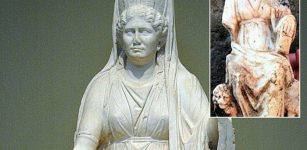 Marble 2th Century AD Statuette Of Goddess Cybele Unearthed In Bulgaria’s Plovdiv
Archaeology | Nov 5, 2019
Marble 2th Century AD Statuette Of Goddess Cybele Unearthed In Bulgaria’s Plovdiv
Archaeology | Nov 5, 2019 -
 Climate In The Andes Has Driven 7,000 Years Of Dietary Changes – New Study Reveals
Archaeology | Feb 9, 2022
Climate In The Andes Has Driven 7,000 Years Of Dietary Changes – New Study Reveals
Archaeology | Feb 9, 2022 -
 Isotope Analysis Helps Tell The Stories Of Aboriginal People Living Under Early Colonial Expansion
Archaeology | May 2, 2023
Isotope Analysis Helps Tell The Stories Of Aboriginal People Living Under Early Colonial Expansion
Archaeology | May 2, 2023 -
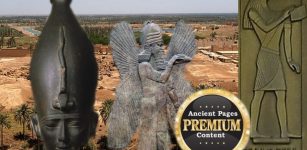 Surprising Ancient Secrets Of The ‘Second Thoth’ And God Osiris
Ancient Mysteries | Sep 27, 2018
Surprising Ancient Secrets Of The ‘Second Thoth’ And God Osiris
Ancient Mysteries | Sep 27, 2018 -
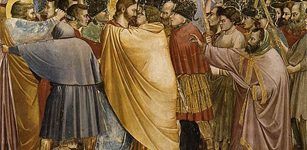 Judas: A Famous Traitor Or A Hero?
Biblical Mysteries | Oct 16, 2017
Judas: A Famous Traitor Or A Hero?
Biblical Mysteries | Oct 16, 2017 -
 New Details On Discovery Of San Jose 300-Year-Old Shipwreck That Sank With Treasure Of Gold, Silver, And Emeralds
Archaeology | May 23, 2018
New Details On Discovery Of San Jose 300-Year-Old Shipwreck That Sank With Treasure Of Gold, Silver, And Emeralds
Archaeology | May 23, 2018 -
 How Ancient Cultures Explained Comets And Meteors
Archaeoastronomy | Jun 5, 2019
How Ancient Cultures Explained Comets And Meteors
Archaeoastronomy | Jun 5, 2019 -
 170-Million-Year-Old Sea Monster Identified As The Oldest Mega-Predatory Pliosaur
Evolution | Oct 23, 2023
170-Million-Year-Old Sea Monster Identified As The Oldest Mega-Predatory Pliosaur
Evolution | Oct 23, 2023 -
 Oldest Canoe Ever Discovered In Maine – It Dates To 1280-1380 A.D
Archaeology | Jun 13, 2019
Oldest Canoe Ever Discovered In Maine – It Dates To 1280-1380 A.D
Archaeology | Jun 13, 2019 -
 Mythical Underground Labyrinth And Legendary Long-Lost Golden Tomb Found In Italy?
Featured Stories | Nov 21, 2024
Mythical Underground Labyrinth And Legendary Long-Lost Golden Tomb Found In Italy?
Featured Stories | Nov 21, 2024 -
 Early Humans Were Probably Driven To Extinction By Climate Change- Study Suggests
Civilizations | Oct 15, 2020
Early Humans Were Probably Driven To Extinction By Climate Change- Study Suggests
Civilizations | Oct 15, 2020 -
 Magnificent Trumpington Cross And Highly Unusual Anglo-Saxon ‘Bed Burial’ In Cambridge Offer Unique Insight Into English Christianity
Archaeology | Feb 22, 2018
Magnificent Trumpington Cross And Highly Unusual Anglo-Saxon ‘Bed Burial’ In Cambridge Offer Unique Insight Into English Christianity
Archaeology | Feb 22, 2018 -
 On This Day In History: The Battle Of The Nile Concludes In A British Victory – On August 2, 1798
News | Aug 2, 2016
On This Day In History: The Battle Of The Nile Concludes In A British Victory – On August 2, 1798
News | Aug 2, 2016 -
 Researchers Will Search For “Fingerprints” Of Thera/Santorini Eruption In Tree Rings
Archaeology | Mar 4, 2017
Researchers Will Search For “Fingerprints” Of Thera/Santorini Eruption In Tree Rings
Archaeology | Mar 4, 2017 -
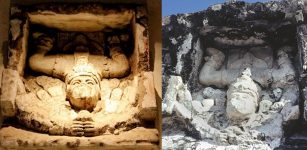 Ancient Maya Ruins Of Tulum: Sea Port And Sacred Site For Worshiping Of Descending God
Featured Stories | Aug 10, 2016
Ancient Maya Ruins Of Tulum: Sea Port And Sacred Site For Worshiping Of Descending God
Featured Stories | Aug 10, 2016 -
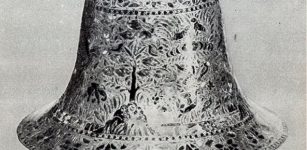 Enigma Of Ancient Bell-Shaped Metal Vase Found In Solid Sedimentary Rock
Artifacts | Jun 6, 2019
Enigma Of Ancient Bell-Shaped Metal Vase Found In Solid Sedimentary Rock
Artifacts | Jun 6, 2019 -
 Unique Over 1,000-Year-Old ‘Telephone’ Invented By A Lost Forgotten Civilization With No Written Language
Civilizations | Aug 24, 2018
Unique Over 1,000-Year-Old ‘Telephone’ Invented By A Lost Forgotten Civilization With No Written Language
Civilizations | Aug 24, 2018 -
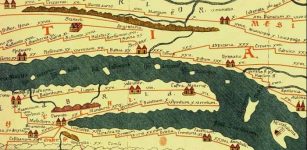 Tabula Peutingeriana: Huge Ancient Roman Map Created By Unknown Cartographer
Artifacts | Dec 14, 2018
Tabula Peutingeriana: Huge Ancient Roman Map Created By Unknown Cartographer
Artifacts | Dec 14, 2018 -
 On This Day In History: Ceres Discovered By Giuseppe Piazzi – On Jan 1, 1801
News | Jan 1, 2017
On This Day In History: Ceres Discovered By Giuseppe Piazzi – On Jan 1, 1801
News | Jan 1, 2017

